by Wallace Wyss –
I knew there was an Elvis from Tupelo, Mississippi well before I knew there was an Alvis car from England. In fact I had never seen an Alvis car until I came to California in the late ’60s and saw a couple at concours events. I pitied the owners, spending so much to restore cars for which there was no demand.
Now, looking at ’50s and ’60s Rolls Royce and Bentley prices I am thinking “These Alvis cars have almost the same styling yet are half the price.” For space reasons and the selfish fact I like the postwar styling more, I’ll only discuss the postwar Alvis cars here.
Alvis tried to rebuild its automotive business in the postwar period. Their “side job” was building armored vehicles. The trouble with competing in the luxury automobile class was that those cars had high taxes. One way to stay in the field but not spend too much was to cut down to offering only one model at a time.
The first postwar model was the TA 14 of 1946, which lasted to 1950 after which it was superseded by the TA 21. Meanwhile the military side was making money with Saladin and Saracen wheeled—not tracked—vehicles.
Alvis did so well in military vehicles they carried that market into the next century. Sadly their car division was losing money, kept going only because it was a prestige marque to British classic car enthusiasts.
Among the most stylish in the 1950s, was the TC 21/100 (that last number to indicate it could “top the ton”, i.e., go faster than than 100 mph). Much more hitting the mark was the collaboration with a Swiss coachbuilder, the TD 21, designed in part by Hermann Graber. Actually the Swiss firm couldn’t keep up with demand so Alvis managed to find a Rolls and Bentley supplier, Park Ward, (owned by Rolls-Royce), willing to make the TD 21 coupés and convertibles. Still penned by Graber, that relationship held until the end of Alvis cars.
The TD 21 made its debut at the Earl’s Court Motor Show in October 1958 and was a hit. The chassis and the engine (mated to a BMC gearbox) were already well-known and dependable, but at last the body matched the quality of the mechanicals. Their competitors were Bristol, Jaguar and Jensen though they were offering the demureness of a Rolls or Bentley, none of this boy racer stuff.
By 1959, they were updated with servo-assisted front disc brakes and Rolls-Royce’s Borg-Warner-derived 4-speed automatic. In 1961, the Series II cars enjoyed a 5-speed ZF gearbox and integrated fog lamps.
While most of the 1069 TD 21 chassis that rolled out of the factory from 1958 to 1963 wore coachwork by Park Ward, Graber proved their craftsmanship by making at least 50 Graber specials with many subtle variations in styling. At one point, Graber was focused almost exclusively on bodying Alvis – the last Bentleys bodied in
Wichtrach were built alongside Alvis bodies.
The biggest change in the Series III was the vertical headlamps which made it more comparable to rivals from Facel-Vega and Mercedes-Benz. Mechanical updates to the Serie III were rear discs, and a re-tuning to gain an extra 15 bhp.
By 1966, there was a Series IV still with an ancient 3-liter chassis cranking out all of 150 bhp. But you couldn’t hide the fact that underneath it was a 1958 body on a 1951 chassis.
When bought out by another firm, the Park Ward contract was cancelled and that was all she wrote. Alvis had made only 1631 TD/TE/TF 21 chassis in nine years.
They also made aircraft engines but lost their market when the aviation industry switched over from gasoline engines to gas turbines during the 1960s. The cars are where my interest ends. They may still exist as an armored car maker under another name.
And so I hope I’ve shed some light on an obscure British marque and now hope someone out there will tell us stories of their Alvis. And not the one in Tupelo….
Let us know what you think in the Comments.
AUTHOR: Wallace Wyss is a fine artist who will be everywhere at Monterey with his Ferrari prints in close proximity.
A note from Mike Gulett, Editor
I watch many British TV shows and some of them have really cool cars driven by the characters. One of those shows is “Kingdom” staring Stephen Fry.
His character drives a beautiful 2-door convertible that I had not seen before. I was able to figure out that it is an Alvis TD 21 Drophead Coupe, which means it is a convertible. I have been an Alvis fan ever since.
Below are a couple of screenshots of Stephen Fry driving an Alvis TD21 DHC.
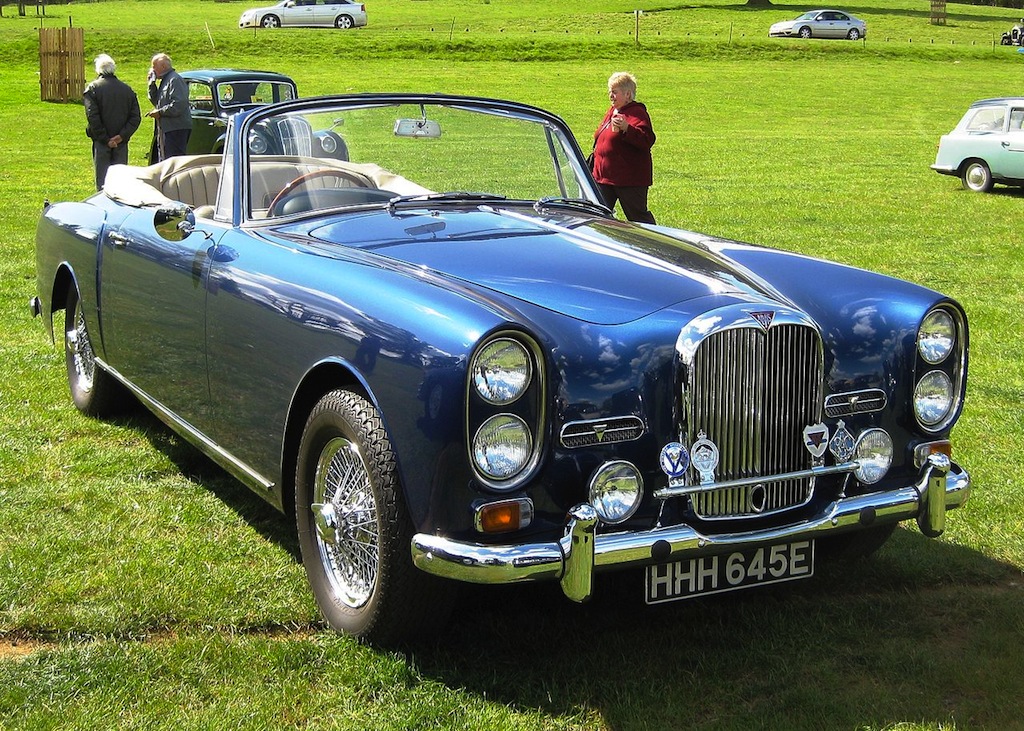
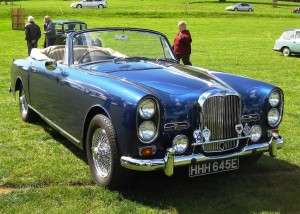
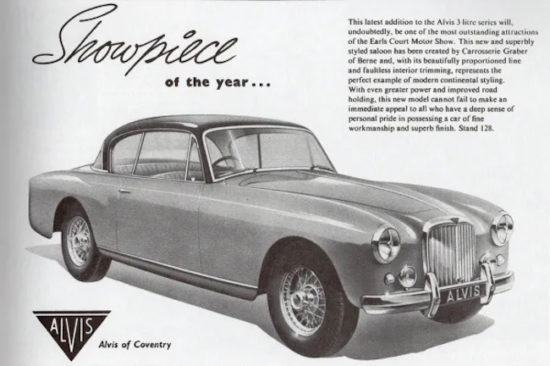

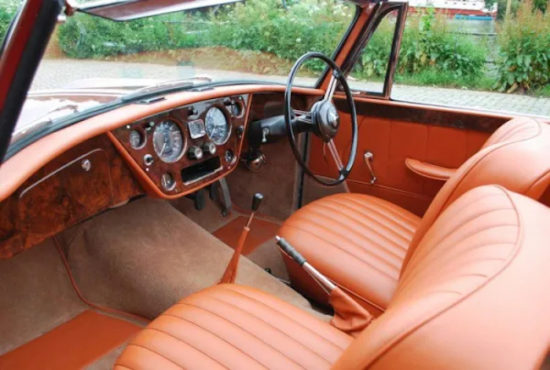
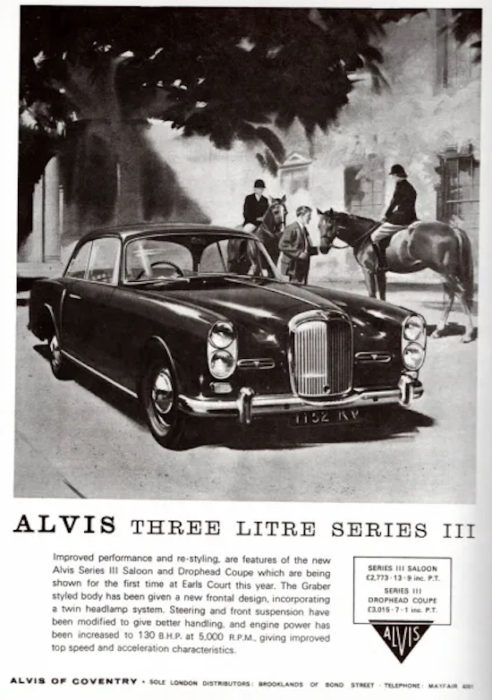

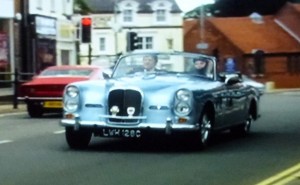
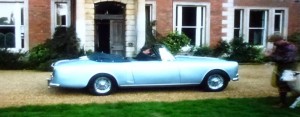
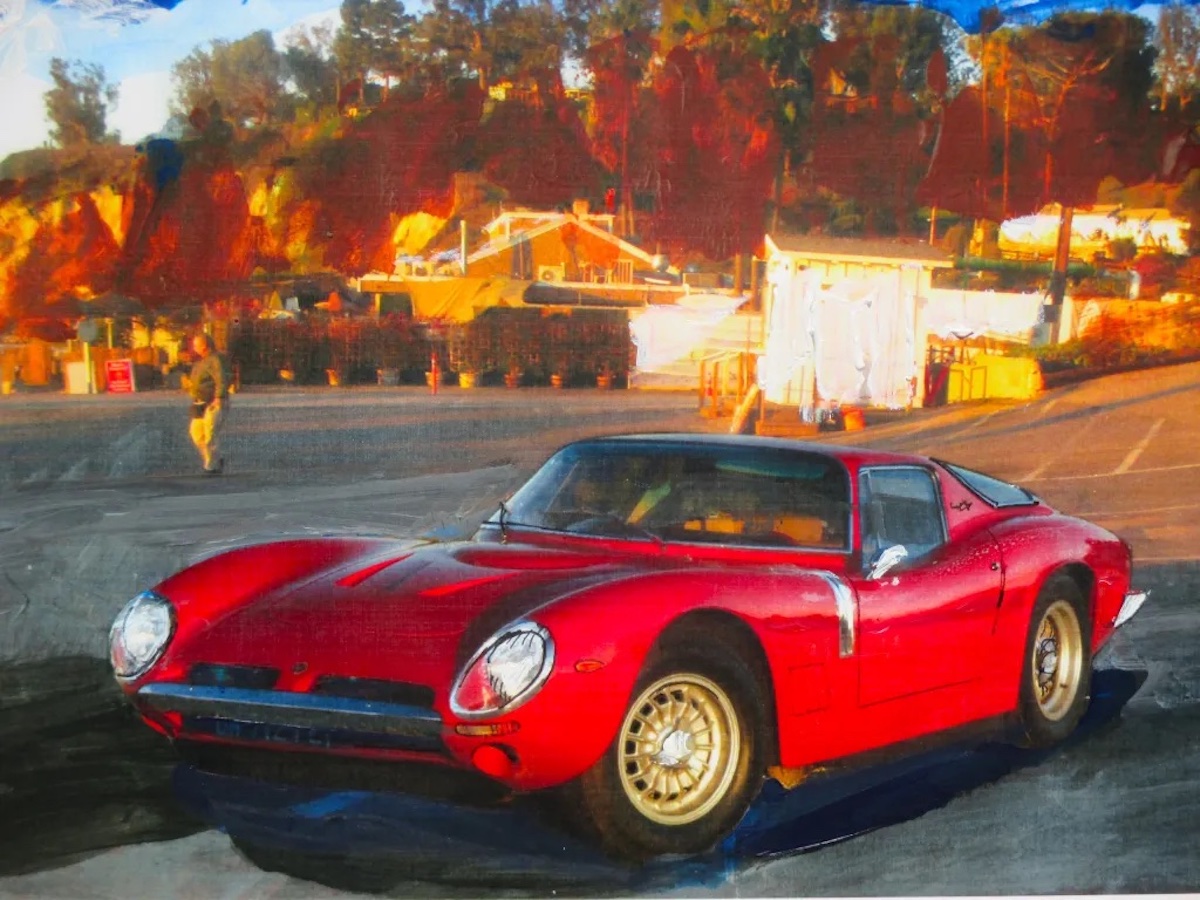

Oldtimer Australia in Brisbane currently has four Alvis cars in stock for sale . They are a 1960 drophead coupe that has been professionally converted , two 1937 4.3 litre saloons by Charlesworth and a 1938 4.3 litre drophead by Vanden Plas .
The late HRH Prince Philip, Duke of Edinburgh owned a dark blue 1961 Alvis TD21, registration OXR1.
The WWII RAF hero Douglas Bader owned at least four Alvis cars, remaining loyal to the marque in the postwar years: a 1954 TC21/100, two TD21s and a TE21. I believe all were drophead coupés. I saw the black TC21 at the Oulton Park Gold Cup during the noughties. It sports a front of bonnet emblem (in the way Jaguars used to have a leaping cat) in the form of a miniature WWII Supermarine Spitfire aircraft.
It may be apocryphal, but I recall reading many years ago that the name “Alvis” came about because the word has no “unfortunate” or negative meaning in any language.
Great write up Wallace. Thank you this bit of history. I’ve always thought the Alvis was a nice looking car but so rare that I’ve never seen one in person. Hopefully some day.
Alvis still makes armored vehicles. Through many mergers and acquisitions, Alvis-Vickers is currently a division of BAE Systems Land Systems (Weapons & Vehicles) Limited. A new company acquired the rights to the Alvis name for cars, as well, and they are doing continuation series of previous well-known Alvis models. I cribbed an article after a google search, edited a bit, and presented it below:
“The reformed Alvis Car Company announced in 2015 that it was starting a new Continuation Series of some of the old firms greatest cars, the classic car world immediately sat up and the classic car world immediately took notice. Alvis really is back!
The number of classic car continuation series on offer has risen in the past few years, driven by a desire for a modern take on iconic classics. Eagle of course have their take on the iconic e-Type, Jaguar themselves announced a limited production run of the legendary XKSS racers and Aston Martin will be building a special continuation of the splendid DB4 GT. So you could say that the phrase “continuation” is certainly in the air at the moment in the classic car world. And the Alvis Car Company is claiming a slice of the action for itself.
The new Alvis 4.3 Liter Continuation Series celebrates the firms sporting heyday of the 1930s, with customers able to choose from a Vanden Plas Tourer, a Bertelli Sports Coupe and a Lancefield Concealed Hood. All use a hand built Alvis 4387cc in-line six cylinder engine with the added benefit of fuel injection and the Alvis engine management system. Thanks to the wide choice of options, all cars can be bespoke designed for the customer, depending on their requirements.
The Graber Super Cabriolet brings drop head sophistication to the 3 Liter Continuation Series.
Also available is the Alvis 3 Liter Continuation Series which is based on the original 1950s T Series grand tourers, specifically the model that sported coachwork by Graber of Switzerland. Customers can choose either the Alvis Graber Super Cabriolet or the Alvis Graber Super Coupe. Both are powered by the Alvis 2933cc in-line six cylinder engine (which is good for 170BHP). It is worth noting that all of the Continuation Series models feature a fully galvanized chassis and all aluminum over ash frame coachwork, utilizing traditional methods as Alvis did back in the day.
In contrast the Garber Super Coupe brings the exquisite lines of a 2+2 to the 3 Litre Continuation Series.
The models that stand out for me are the Graber Super Coupe and the Graber Super Cabriolet. Both are absolutely exquisite automobiles. Swiss coach builders Graber enjoyed a fruitful twenty year period with the British midlands firm, supplying it with bespoke and rather elegant bodies for its cars. The original Graber bodied Alvis TC 21/100 “Grey Lady”, which was presented in 1955, laid the foundation for the T-Series coupes and cabriolets.
The original 1967 Graber Super Coupe itself is the basis for the new Continuation Series and the Alvis Car Company could not have picked a more exceptional model to revive. It encompasses all you could ask for in a sports tourer. It has the unique and rare Graber inspired coachwork, a luxurious interior and a silky smooth 3 litre straight six. It is the ultimate homage to the red triangle and generations of it’s innovative and bespoke automobiles.
The Graber inspired coachwork makes the Alvis a very unique and special coupe.
And this is why there has never been a greater period for classic cars. Their popularity is still rising and an ever growing market has emerged to supply pretty much every need and desire for the discerning enthusiast. Engineering standards have never been better and the skills and expertise are there to hone and improve the classic car experience. Each model they are building is special and carries with it a historical significance that harks back to the glory days of the original firm. There is also heaps of nostalgia attached to it and the famous red triangle. For me the star of the show will undoubtedly be the Graber Super Coupe.
More details on the models offered in the Continuation Series can be found on the Alvis website”
Glenn in Brooklyn, NY
Glenn, do you know anyway to find an Alvis TD/TE coupe in the US?
Peter,
It seems that there are plenty for sale in the UK, but I don’t see anything for sale here in the US. If you are jonesing for an Alvis really, really bad, it might pay to make a trip to the UK, check out their rather extensive inventory, and ship one you like back here to the US.
Glenn in Brooklyn, NY
Rode from Peking to Paris in a 1933 Alvis Speed 20 as a navigator in 2010 –10,000 miles in 40 days -won the Vintageant Class and beat 9 Bentleys –rough 9 days in Mongolia –sleeping in tents –My driver-owner’s Coke froze one night.
Hit 173 km/hr on slight downhill on Turkey’s Autobahn. It was a two seater, no roll bar no seat belts.
Won’t do that again but car probably would.
Lennox, Whistler B.C.
What an adventure!
I like this modified 1967 Ith hat looks like RR SCIII fenders, but still Alvis grille, It was advertised for auction in 2013 in the UK One history said “This 1967 Alvis Burns Special is the only one of its kind and will soon be offered alongside an array of classics, race and competition cars by Silverstone Auctions. It’s fascinating history behind the unique Alvis starts in 1966, when businessman James Burn started work on creating a faster and better looking “export-only” Alvis for the US market. His vision of a V8-powered Alvis included replacing the 115hp straight-six engine with a 300hp 5.3-liter Corvette unit, heavily modifying the bodywork and lowering the roof line by several inches.”
They expected it to sell for $67000 but didn’t hear final result,